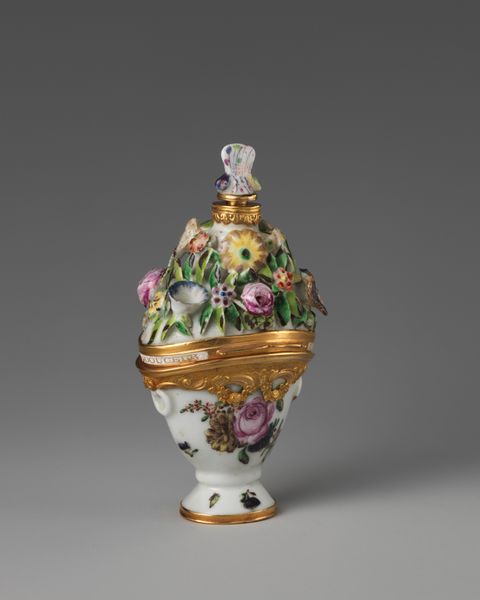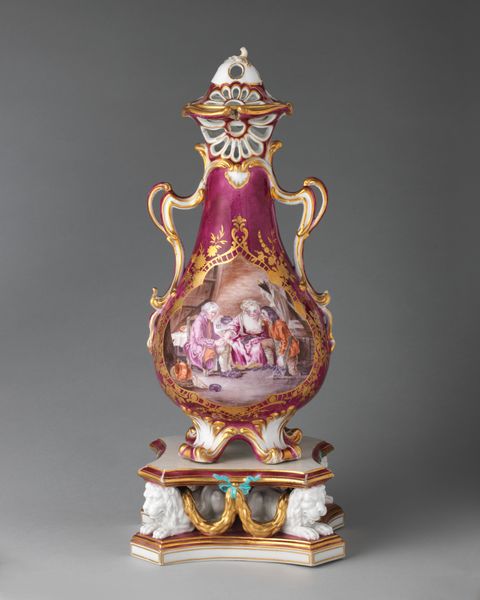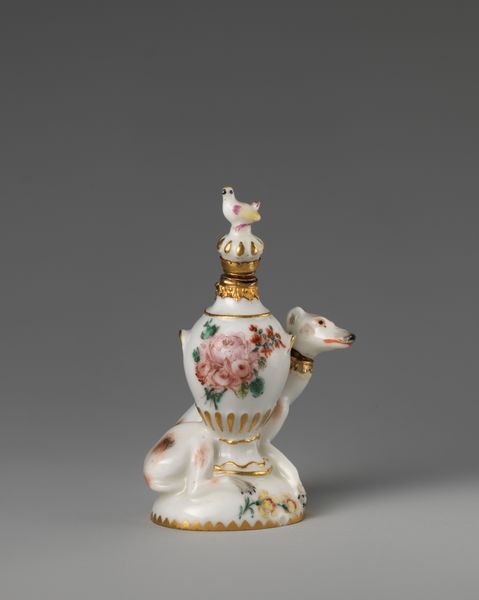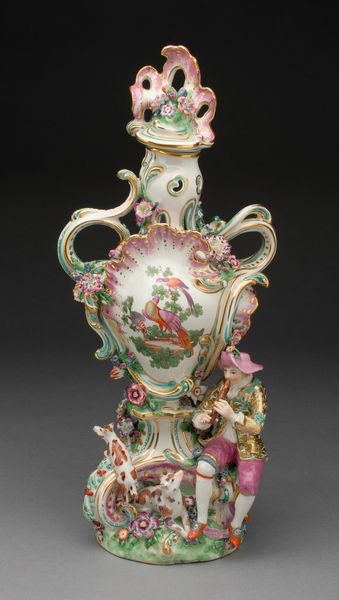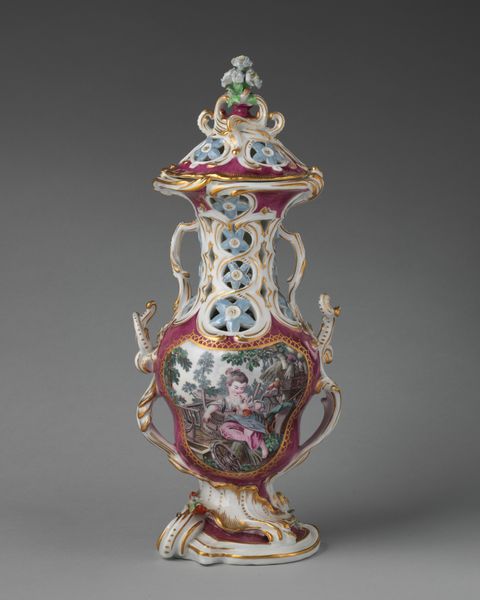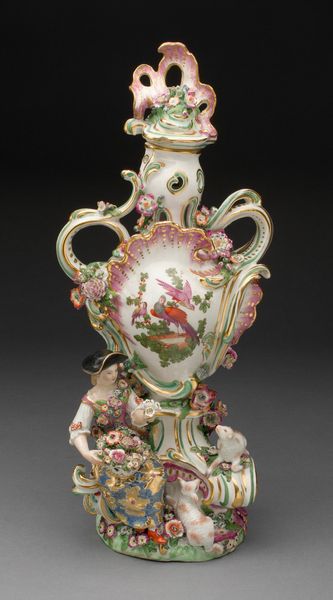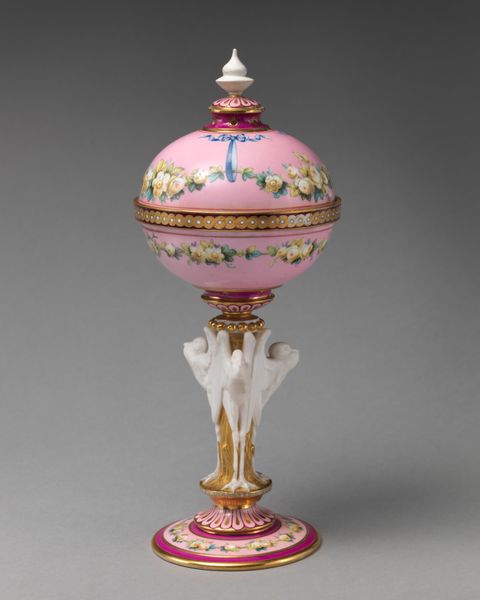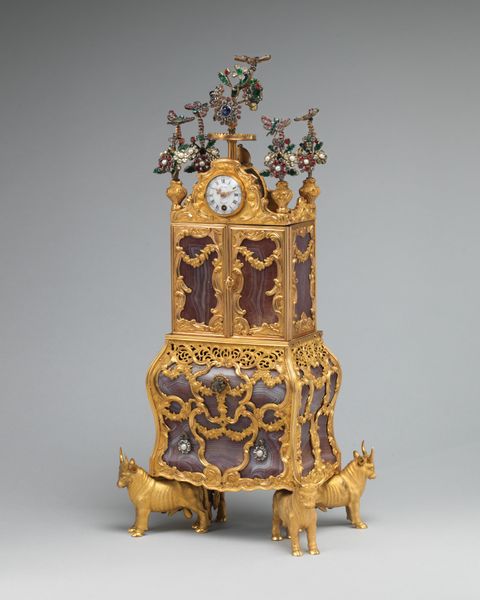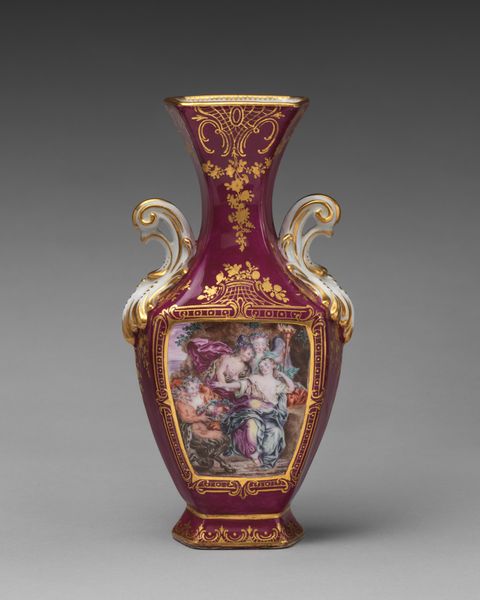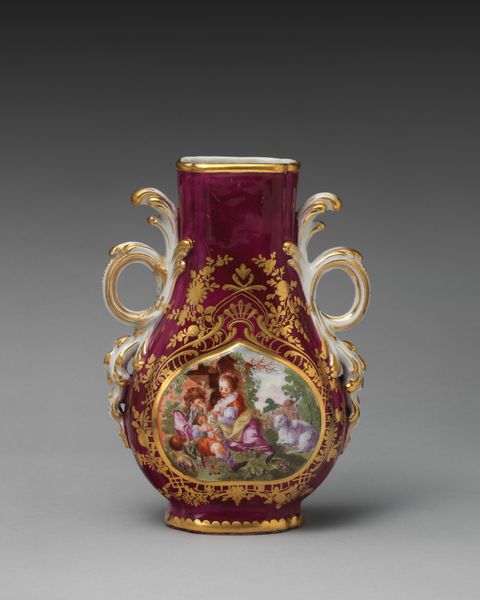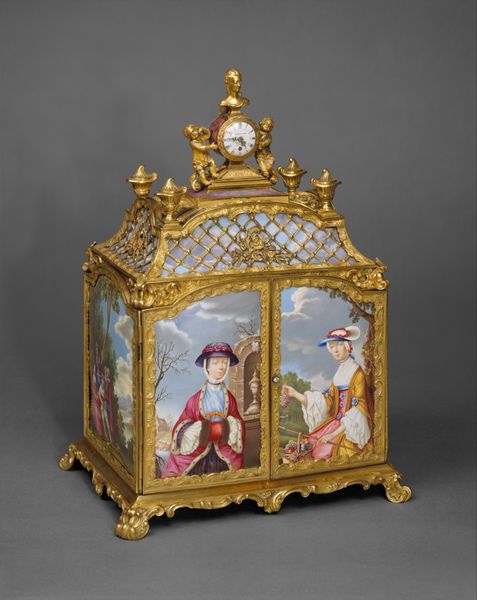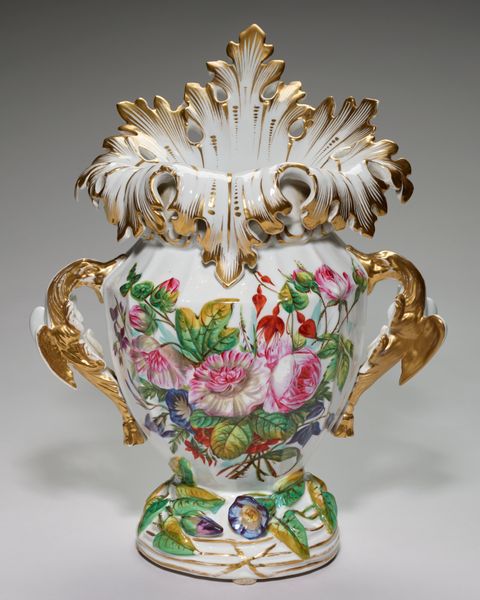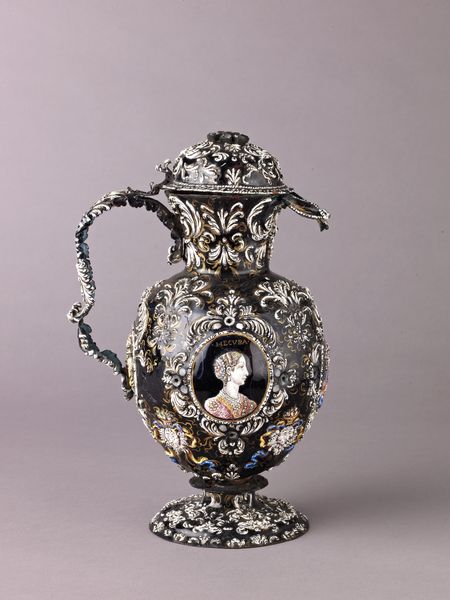
ceramic, porcelain, sculpture
#
ceramic
#
porcelain
#
figuration
#
fruit
#
sculpture
#
group-portraits
#
men
#
decorative-art
#
rococo
Dimensions: Height: 12 3/4 in. (32.4 cm)
Copyright: Public Domain
Curator: Here we have “Summer and Autumn,” a porcelain sculpture created between 1760 and 1770 by the Chelsea Porcelain Manufactory. It’s currently held at the Metropolitan Museum of Art. Editor: It feels incredibly delicate, doesn't it? And fanciful. Almost dreamlike with the pastel palette and ornate detail. There’s an inherent preciousness in these Rococo figures. Curator: Absolutely. Rococo was all about the ornamental. It’s worth noting how the seasons themselves become allegorical, embodied as youthful figures – Summer in her floral adornments and Autumn carrying the fruits of the harvest. This resonates with earlier visual traditions of seasonal personification. Editor: Tell me more about how that works psychologically – personifying the seasons. What does it *mean* to us, beyond mere decoration? Curator: The pairing is powerful. Summer, with its associations of growth and abundance, gives way to Autumn, the season of reaping and preparation for winter's dormancy. Together, the pair conveys not only prosperity and the seasonal rhythms of life, but hints at life stages themselves – youth maturing to a fulfilling but finite later phase. Editor: Considering the context – the mid-18th century – I wonder how this sculpture reflects ideas of agrarian society and courtly life. Is it idyllic fantasy or idealized labor? Porcelain itself was quite exclusive... Curator: Indeed. It served as a symbol of wealth and sophistication for its patrons, often aristocratic elites eager to associate themselves with images of bucolic charm, even though distanced from real rural toil. The rosy glow on both of the porcelain figures adds to this overall romantic, somewhat fictionalized, vision. Editor: The artist’s choice of medium further enforces the sculpture’s meaning. These are obviously privileged figures portrayed through porcelain that's so pristine it evokes a feeling of innocence and pastoral charm. Curator: I think we can read that contrast – the precious medium presenting agricultural ideals – as central to its lasting appeal. Editor: It reminds us how material culture acts as a touchstone, revealing deeper aspirations and cultural complexities beneath the surface.
Comments
No comments
Be the first to comment and join the conversation on the ultimate creative platform.
